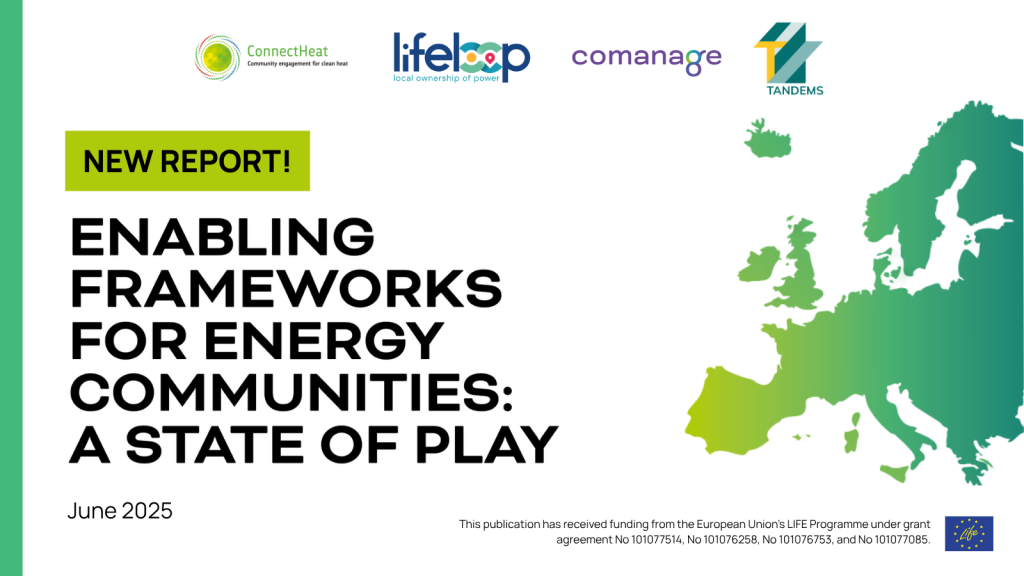Impact radar: Local policies and practices for community energy projects
A critical look and outlook
A new report, issued by the EU-funded LIFE LOOP project this April, examines the policy landscapes, challenges, and opportunities for community energy development across five European locations: Bistrita and Tulcea (Romania), Zagreb (Croatia), Crete (Greece), Sardinia (Italy), and Cyprus, which are pilot and satellite locations for the European LIFE LOOP project. Across all studied locations, there are promising policy developments which include the establishment of local financial instruments, administrative simplification initiatives, municipal recognition of energy communities and the creation of one-stop shops providing technical guidance. These developments demonstrate how local authorities can actively support the community energy transition while achieving their climate and development objectives.
In Romania, we observe emerging local support systems for energy communities, with municipalities beginning to explore pilot projects for PV installations on public buildings. However, restrictive homeowners’ association regulations and limited local capacity building programs continue to impede progress. The City of Zagreb has developed a practical policy roadmap that recognizes energy communities as tools for achieving local sustainability goals.
Things getting into the way
Yet, local administrative complexity and insufficient municipal integration of community energy into planning processes remain significant barriers. Crete has established a comprehensive local support system for energy communities, including a one-stop shop and collaborative programs to address energy poverty. However, the island faces unique challenges related to grid capacity limitations and restrictive financial requirements that favour large-scale investors over community initiatives. In Sardinia, the regional government has allocated substantial funding for renewable energy systems, but grid infrastructure limitations and complex administrative procedures create implementation barriers for community projects. Cyprus has begun localizing national regulatory frameworks, but municipalities face significant capacity and infrastructure constraints when supporting renewable energy communities. Common challenges across all regions include limited grid capacity access for community projects, complex administrative procedures, insufficient technical expertise at the municipal level, and inadequate financial support mechanisms.
A critical look and outlook
The report highlights the critical role of municipalities in facilitating community energy development—when local authorities actively participate in or support energy communities, they unlock public infrastructure for renewable installations, build citizen trust, and ensure broader community benefits. Our findings indicate that successful energy communities depend on balanced collaboration between citizens, local authorities, and technical experts. The recommendations outlined in this report emphasize practical steps to enhance local policy frameworks, including dedicated municipal funding programs, streamlined administrative procedures, enhanced technical support services, and improved grid access provisions for community projects. As Europe continues its clean energy transition, community energy initiatives represent a powerful mechanism to ensure this transition is just, democratic, and locally beneficial. By implementing the policy recommendations outlined in this report, local and regional authorities can create enabling environments where energy communities thrive—transforming passive energy consumers into active participants in sustainable energy systems.
- Executive Summary (key findings)
- Detailed analysis of community energy policy developments in:
- Bistrita and Tulcea, Romania
- Zagreb, Croatia
- Crete, Greece
- Sardinia, Italy
- Cyprus
- Conclusions and recommendations
YOU MAY ALSO LIKE THIS
The follow up report, Enabling Frameworks for Energy Communities: A State of Play (issued in June 2025), offers a comprehensive roadmap for policy-makers in 11 EU countries eager to make citizen-led energy projects an EU-wide reality.


